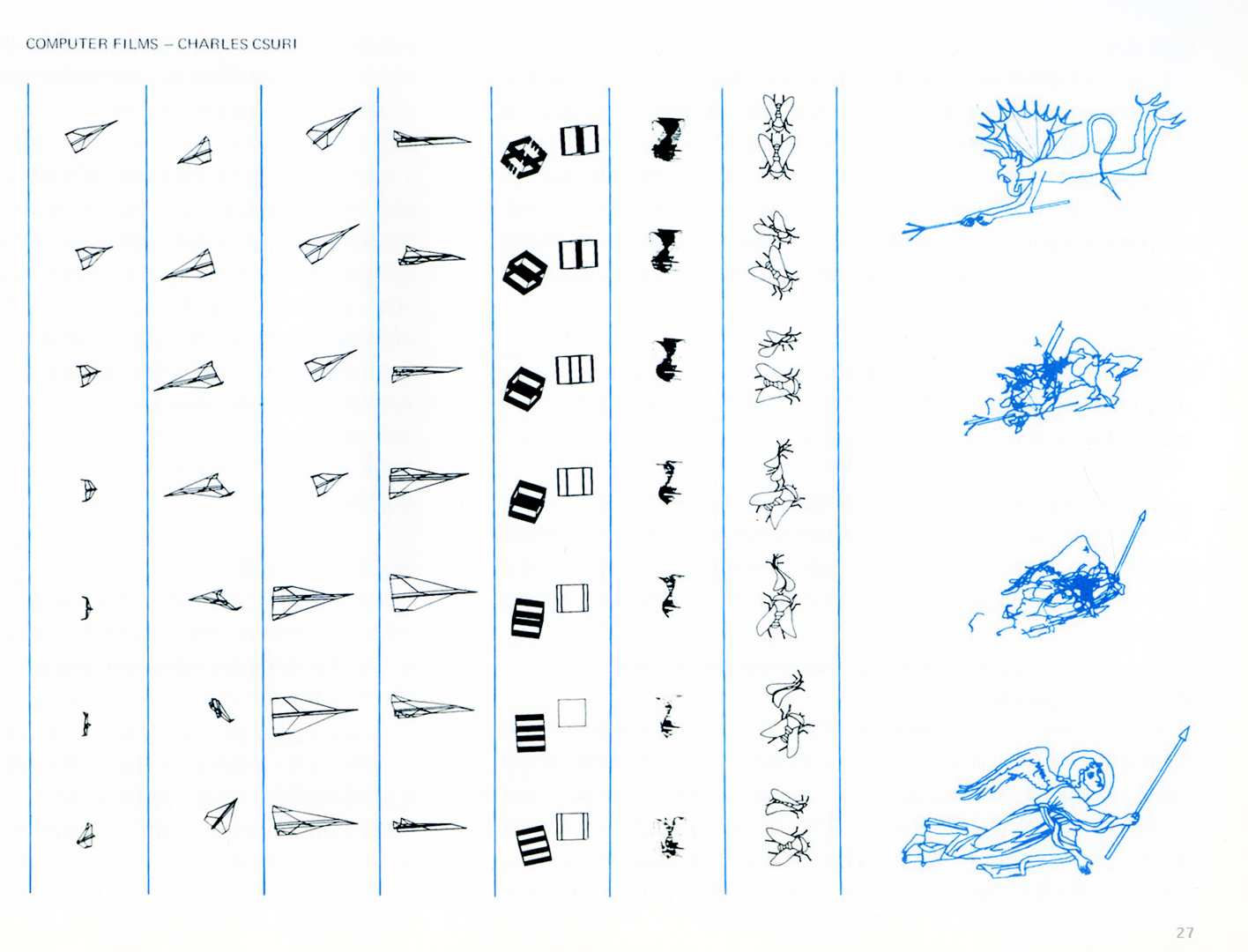Charles A. Csuri: Computer Films
Artist(s):
Title:
- Computer Films
Exhibition:
Creation Year:
- 1970
Category:
Artist Statement:
The question of artistic control emerged once again, when Csuri examined interactive systems within the research for real-time film animation beginning in 1969. Different objects, such as origami swallows, goldfish, butterflies, turtles, violins, and helicopters could be generated, turned and moved via a three-dimensional data table, a light pen, dials, a joystick, function switches, and the alphanumeric display terminal. In a major exhibition project, Csuri again transcended different media in order to promote an idea.
In cooperation with fourteen departments he organized the show Interactive Systems: Computer Animated Film. Electronic Sound. Video. Light. Electromyogram. Environmental Collage at OSU. The exhibition opened April 1, 1970, the same year that Jack Burnham curated the now famous Software. Information Technology: Its New Meaning for Art at the Jewish Museum in New York, pleading for “responsive systems” in art. In the introduction to the catalogue of Interactive Systems, Csuri wrote:
The spectator will be permitted to participate
in esthetic decision making. An effort has been
made to create esthetic situations or environments
in which the spectator can become involved.
This is expected to be accomplished through
a controlled electronic environment, in
which a user can make decisions by electronic
means to invent or modify images or sound
systems.
The catalogue bears witness to an impressive exhibition showing not only a selection of the films produced by Csuri and his students, but also, several interactive installations realized in the diverse media indicated in the exhibition’s subtitle. Csuri even managed to install a complete computer graphics system, a PDP 11/45 computer line drawing display, to demonstrate the interactive process for animated film. Art students were scheduled to demonstrate to the public techniques for art graphics and film animation. There is no documentation of the exhibition besides the catalogue, because after only five days, the entire campus was shut down when serious conflicts emerged in connection with
the civil rights movement.





